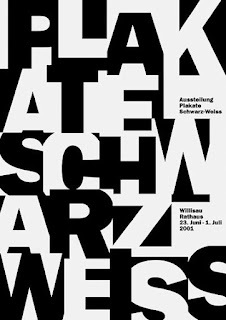DESIGN PRINCIPLES - TASK 1: EXPLORATION
Week 1 (06/02/24) - Week 3 (21/02/24)
Azim Azariff Bin Azahar (0353583)
Bachelor of Design (Honours) in Creative Media
Design Principles - Task 1: Exploration


INSTRUCTIONS
<iframe
src="https://drive.google.com/file/d/1W5zFCZkKv0omqyvaBjAhzwsDkYFC3L1m/preview"
width="640" height="480" allow="autoplay"></iframe>
TASK 1: EXPLORATION
1. Design Principles
First we are required to recap the listed design principles in the MIB which are:
- Gestalt Theory
Gestalt principles or laws are rules that describe how the human eye perceives visual elements. These principles show how complex scenes can be reduced to more simple shapes. (From lecture slides)
(Principle of Similarity, Principle of Continuation, Principle of Closure, Principle of Proximity, Principle of Figure/Ground)

|
|
Fig. 1.1 Gestalt Theory (14/02/24) |
Contrast is the juxtaposition of strongly dissimilar elements. (From lecture slides)

|
|
Fig. 1.2 Contrast (14/02/24) |

|
|
Fig. 1.3 Emphasis (14/02/24) |
Balance is the distribution of visual weight in a work of design. It is the visual equilibrium of the elements that causes the total image to appear balanced. It can be symmetrical or asymmetrical. (From lecture slides)

|
|
Fig. 1.4 Balance (14/02/24) |
Repetition could make a design seem active. The repetition of elements of design creates rhythm and pattern within the work. (From lecture slides)

|
|
Fig. 1.5 Repetition (14/02/24) |
Movement is the way a design leads the eye in, around, and through a composition - the path the eye follows. Motion or movement in a visual image occurs when objects seem to be moving in a visual image. (From lecture slides)

|
|
Fig. 1.6 Movement (14/02/24) |
Harmony involves the selection of elements that share a common trait. Harmony is the sense that all of the elements of your design fit together, They may fit the same theme, aesthetic style or mood. (From lecture slides)
Unity refers to the repetition of particular elements throughout your design - whether they're colours, shapes or materials - to pull the look together. Unity occurs when these elements are composed in such a way that they are balances and give a sense of oneness, creating a theme. (From lecture slides)

|
|
Fig. 1.7 Harmony & Unity (14/02/24) |
Symbol is a sign, shape or object that represents something else. In design, symbols can provide or convey information , equivalent to one or more sentences of text, or even a whole story. (From lecture slides)
Pictorial Symbols: Image-related and simplified pictures.
Abstract Symbols: It can look like the objects that they represent but have less details.
Arbitrary Symbols: It has no resemblance at all to the object or ideas they represent.

|
|
Fig. 1.8 Symbol (14/02/24) |
Word and Image is a vital part of a design, be it print or digital. Users and viewers are able to relate to a concept or a brand if the right images are used in a work of design.(From lecture slides)
.png)
|
|
Fig. 1.9 Word and Image (14/02/24) |
After that, we need to choose one goal from the United Nations Sustainable Development Goals (UNSDG) and briefly describe it.
The goal I've chosen is: (1) No poverty
This goal is to end poverty in all its forms around the world. Poverty has ruined many lives and it's our goal to help those people in need. It won't be straightforward but ending poverty would do so much for those people.
3. Existing Artwork
After choosing our goal of choice, we needed to find an artwork that represents the goal. This is the artwork I've chosen:

|
|
Fig. 1.10 No Poverty (2020) Patrick Dodoo |
Finally, we are needed to give an explanation to why we chose that design in relation to the UNSDG goal and list the design principles we find in the artwork.
Explanation:
The reason why I chose this design in relation to the UNSDG goal is because the artwork gives a direct meaning to poverty. I've seen many posters/artworks that represents poverty but this one stood out to me as red is one of my favourite colours, it's such a bright and eye catching colour. Also, minimal designs are my favourite type of design and this artwork is just that. It's a minimal poster that says so much. I personally love the fact that the poster does not need any words or extra images to portray its meaning.
List of Design Principles:
- Emphasis
- Contrast
- Balance
FEEDBACK
Week 1: No feedback as it was an introduction class.
Week 2: Add number to the chosen goal, finish adding examples to the principles, give a more personal input in the explanation.
Week 3: It is better to embed links instead of pasting it onto the blog, it makes it look neater.



Comments
Post a Comment